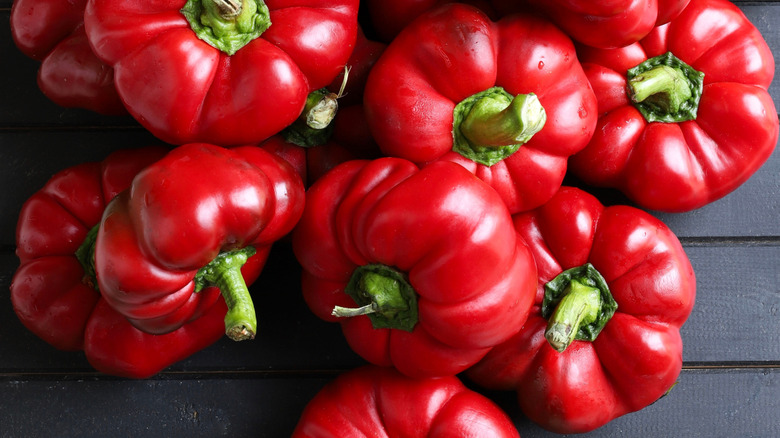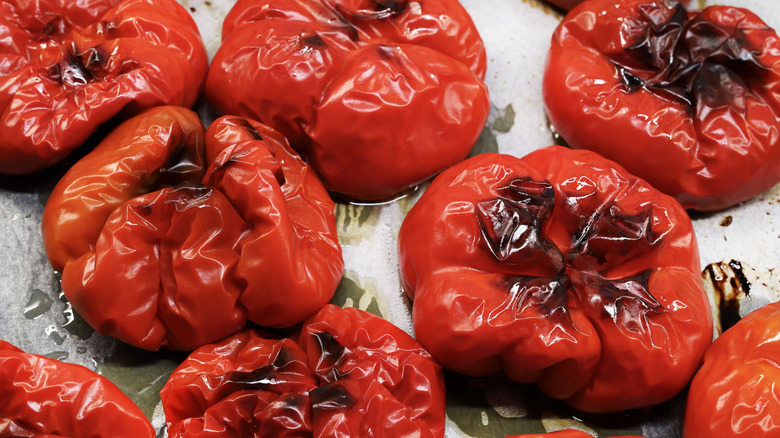What Makes Pimento Peppers So Ideal For Roasting?
Whenever autumn approaches, it signals the end of the season for peppers, making it the ideal time to make the most of the last harvest. They're the perfectly bright, colorful addition to cozy autumn dishes, whether it's stuffed bell peppers, a fall harvest bowl or a roasted pepper pizza. But if you're going with that last option, it turns out you may want to reach for something a little different than your classic red bell pepper. Instead, try the slightly smaller, slightly spicier pimento pepper.
Pimento peppers are about the size of an orange, and are shaped like a heart (aww). They're slightly higher on the Scoville scale than bell peppers (which, quite literally, have zero Scoville units), and are known for their sweet, juicy flavor. (If you've ever eaten pimento-stuffed green olives or the Southern classic pimento cheese, you've tried a pimento, inadvertently or not.) They're sometimes called cherry peppers, but this name is somewhat of a misnomer; another, much hotter pepper goes by the same name — and depending on your spice tolerance, mixing them up could be a fiery mistake.
Charcuterie board sides aren't all pimento peppers are good for, though —they're also great for roasting. They have a thick skin, making it easy to peel off once roasted, and their sweet, aromatic flavor profile may add something to your dish that a red bell pepper won't.
Roasting peppers enhances their flavor
Roasted peppers are an ingredient used in many recipes, from blended red pesto to creamy red pepper pasta. You can always swing by a grocery store to pick up a jar of roasted peppers, but they're also easy (and cheaper) to make at home on the grill or in the oven. In fact, you can even roast peppers in an air fryer. Peppers are also great fresh, but roasting them comes with some benefits — especially with pimento peppers.
As it turns out, roasting enhances the natural flavor of food, as well as softening vegetables and bringing out new, caramelized notes in the taste. For peppers specifically, roasting adds a smoky and sweet touch, while also bringing out their chile heat.
Unfortunately, the smokiness of the pepper translates to burnt-ness of the pepper's skin. So unless you're a person who likes their marshmallows burnt to a crisp, you're going to want to peel the blackened skin off the pepper, post-roast. Luckily, pimento peppers won't make this too much of a chore for you, with their thick, easily peelable skin — and the resulting soft, sweet snack is totally worth it.
Just because bell peppers are the kind of peppers you're used to roasting doesn't mean they're the only or best option. So go forth and experiment with your flavors and cooking techniques — but to be safe, make sure to check where a pepper variety sits on the Scoville scale before you throw it into your homemade hummus.

